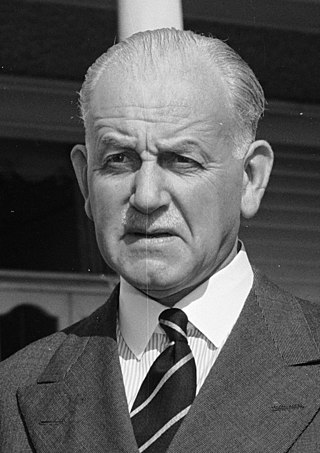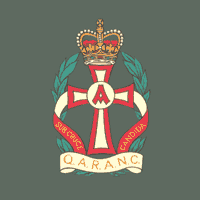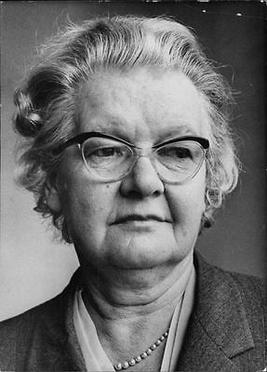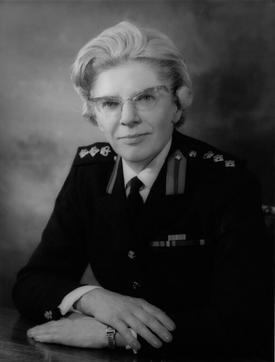
Lieutenant-General Charles Willoughby Moke Norrie, 1st Baron Norrie,, was a senior officer of the British Army who fought in both World Wars, following which he served terms as Governor of South Australia and the eighth Governor-General of New Zealand.

The Women's Auxiliary Air Force (WAAF), whose members were referred to as WAAFs, was the female auxiliary of the British Royal Air Force during the Second World War. Established in 1939, WAAF numbers exceeded 181,000 at its peak strength in 1943, with over 2,000 women enlisting per week.

Queen Alexandra's Royal Army Nursing Corps is the nursing branch of the British Army Medical Services.

The Women's Army Auxiliary Corps (WAAC), known as Queen Mary's Army Auxiliary Corps (QMAAC) from 9 April 1918, was the women's corps of the British Army during and immediately after the First World War. It was established in February 1917 and disbanded on 27 September 1921.

The Women's Auxiliary Service (Burma) (WAS(B)) also known as the Chinthe Women because of the mythological creature that formed their badge. The unit was formed on 16 January 1942 and disbanded in 1946. They were a 250 strong group of British and Australian women who operated mobile canteens for the troops of Burma Command in World War II. They were founded and led by Mrs Ninian Taylor, who was granted the rank of Major and her services were an OBE for her services.

Air Chief Commandant Dame Ruth Mary Eldridge Welsh, was the second Director of the British Women's Auxiliary Air Force (WAAF), from 1943 to 1946.
Charles Symonds Leaf, was a British sailor who competed in the 1936 Summer Olympics. He contributed to the design and build of the Merlin Rocket sailing dinghy.

Dame Sidney Jane Browne, was the first appointed Matron-in-Chief of the newly formed Queen Alexandra's Imperial Military Nursing Service (QAIMNS). After she retired from the QAIMNS she was appointed as Matron-in-Chief of the Territorial Force Nursing Service. Browne was appointed a Dame Grand Cross of the Order of the British Empire in 1919 and, in 1922, she became the first President of the Royal College of Nursing, a post she held until 1925.
Dame Louisa Jane Wilkinson, was a British military nurse and nursing administrator who served as Matron-in-Chief of the Queen Alexandra's Imperial Military Nursing Service from 1944 to 1948. She founded Queen Alexandra's Royal Army Nursing Corps, and was also president of the Royal College of Nursing.

Jean Marcia Montagu, Baroness Swaythling, CBE, first married name Knox, was Director of the Auxiliary Territorial Service from July 1941 to October 1943.
Olive Mudie-Cooke was a British artist who is best known for the paintings she created during the First World War. Mudie-Cooke served as an ambulance driver in both France and Italy during the conflict and these experiences were reflected in her artwork.
Lieutenant Colonel Hugh Alexander Pollock was a British publishing editor, who served as a soldier in the Royal Scots Fusiliers in the First World War and in the Auxiliary Military Pioneer Corps in the Second World War. Married three times, he was the first husband of Enid Blyton, and then Ida Pollock, both writers.
Dorothy Josephine Coke was an English artist notable for her work as a war artist on the British home front during the Second World War. Coke was also an art teacher and as an artist was known for her watercolours, which have a very free, open-air quality to them.

Dame Albertine Louisa Winner was a British physician and medical administrator. After graduating from University College Hospital Medical School, Winner practised at the Elizabeth Garrett Anderson Hospital, the Mothers' Hospital in Clapton, and Maida Vale Hospital for Nervous Diseases.
Commandant Dame Jean Davies Lancaster, was a senior British naval officer who served as Director of the Women's Royal Naval Service (WRNS) from 1961 to 1964.
Ogilvie Blair Graham, was an Irish first-class cricketer and British Army officer. Graham served with the Oxford University Officers' Training Corps before receiving a commission in the Rifle Brigade. During the First World War he rose to command a battalion of the Rifles and received the Distinguished Service Order. Graham was later an instructor in infantry tactics, before transferring to the Royal Artillery (RA) in the Territorial Army. During the Second World War he commanded the RA defences in Northern Ireland and was appointed an officer of the Order of the British Empire. He also served as a deputy lieutenant and High Sheriff of County Down. Graham played cricket for Harrow School and later made first-class appearances for Oxford University, the Europeans and the Indian Army cricket team.
This is a list of MBEs awarded in the 1919 New Years Honours.
Richard Barrett Talbot Kelly MBE, MC, RI,, known to friends and colleagues as 'TK', was a British army officer, school teacher, and artist, known especially for his watercolour paintings of ornithological subjects.

Sheila Anne Elizabeth Heaney, CB, MBE, TD was a British Army officer. She joined the Auxiliary Territorial Service shortly before the Second World War and served in the UK, East Africa and Palestine. In 1949 she transferred to the newly formed Women's Royal Army Corps (WRAC). Heaney rose through the ranks and was appointed a Member of the Order of the British Empire. She was promoted to the rank of brigadier, appointed director of the WRAC and aide-de-camp to Queen Elizabeth II in 1970. As part of her role as director Heaney visited the United States to study the integration of women into their army and recommended that the process proceed in the UK on a more gradual basis. She instituted changes to make it easier for women in the British Army to choose their branch of service. After her retirement in 1973, she lived in Edinburgh where she volunteered with the Women's Royal Voluntary Service and supported a local hospice.
Brigadier Dame Jean Elizabeth Rivett-Drake, was a senior British Army officer and politician. She served as director of the Women's Royal Army Corps between 1961 and 1964. After retiring from the army, she entered local politics and was elected to Hove Borough Council (1966–1984) and later to East Sussex County Council (1973–1977). She was Mayor of Hove from 1977 to 1978; she was the first woman to hold that appointment.











